HM Prison and Probation Service annual staff equalities report: 2024 to 2025
Published 27 November 2025
Applies to England and Wales
Main Points
| 68,911 (headcount) staff in post as at 31 March 2025 | This was a decrease of 0.2% compared to 31 March 2024. Females represented 55.0% of staff (0.3 percentage point increase since last year) and 16.1% of staff who reported their ethnicity were from ethnic minority backgrounds (an increase of 2.0 percentage points since last year). |
| 7,188 (headcount) new recruits to HMPPS in 2024/25 | This was 4,037 (36.0%) fewer than in 2023/24. Females accounted for 52.9% of joiners, which was an increase of 0.8 percentage points compared to 2023/24, and 43.7% of joiners were aged under 30 years old. |
| 3,496 staff (5.6%) were receiving temporary cover allowances (TCA) | This was a decrease of 0.6 percentage points compared to 31 March 2024. TCA rates were slightly higher for females (5.7%) compared to males (5.4%). |
| 4.0% of permanent staff were promoted, an equivalent of 2,724 promotions | A decrease from the rate of 4.4% (2,926 promotions) in 2023/24. The promotion rate for female staff was higher in 2024/25 at 4.4% compared to males at 3.4%. |
| 40.0% of staff received a recognition and reward bonus during the year | This was an increase of 4.2 percentage points compared to 2023/24. The average value for each member of staff who received an award in 2024/25 was £188. |
| 1,081 staff raised grievances, representing 1.6 per 100 staff | This was a slight increase of 0.1 percentage points in the number per 100 staff from 2023/24. These resulted in 1,278 cases of which 516 (40.4%) were upheld/partially upheld. The number of grievance cases raised during the year increased very slightly compared to 2023/24, but the percentage of cases being upheld/partially upheld decreased by 8.0 percentage points (from 48.4%). |
| Overall rate of conduct & discipline cases was 1.9 per 100 staff | An increase from 1.6 per 100 staff in 2023/24. In 2024/25, the rate was more than double for male staff (at 2.8 per 100 male staff) compared to female staff (at 1.1 per 100 female staff) and was highest amongst band 3-5 prison officers at 3.2 per 100 staff. |
| HMPPS staff lost an average of 11.9 working days due to sickness | An increase from 11.1 days in 2023/24. For 2024/25, the average was higher for female than male staff (12.1 and 11.6 days, respectively) and was higher for ethnic minority[footnote 1] staff (12.8 days) compared to white staff (11.5 days). |
| The overall leaving rate across HMPPS in 2024/25 stood at 10.7% | This is a decrease of 0.9 percentage points compared to 2023/24. The leaving rates were higher for male staff (11.9%) compared to female staff (9.7%) and was highest amongst Operational Support Grade (OSG) staff at 14.4%. |
This publication considers staffing profiles and processes of the directly employed HMPPS workforce from an equality perspective. Technical details and explanatory notes can be found in the accompanying Guide and Glossary to the annual HMPPS Staff Equalities Report.
Please send any feedback you may have related to the content of this publication to: robert.hartley@justice.gov.uk
Statistician’s comment
As at 31 March 2025, the HMPPS workforce stood at 68,911 (headcount) staff in post, representing a slight decrease of 0.2% compared to the previous year. Female staff continued to make up most of the workforce at 55.0%, and 16.1% of staff who had self-reported their ethnicity were from ethnic minority backgrounds, an increase of 2.0 percentage points since last year. Recruitment levels fell substantially, with 7,188 new staff joining HMPPS in 2024/25, which was 36.0% fewer than in 2023/24. More than half of these joiners (52.9%) were female, 43.7% were aged under 30 years old, and 37.3% had self-reported themselves as being from an ethnic minority background.
Promotions were less frequent this year, with 4.0% of permanent staff promoted compared to 4.4% in 2023/24. Female staff had a higher promotion rate than male staff, continuing the trend observed in previous years. Recognition and reward bonuses were awarded to 40% of staff employed in 2024/25, with an average value of £188 per person. This is an increase from 2023/24 where 35.9% of staff received a recognition and reward bonus, with an average value of £168 per person.
Grievances were raised by 1,081 staff, equating to 1.6 per 100 staff, a slight increase from last year. However, the proportion of cases upheld or partially upheld fell to 40.4%, down from 48.4% in 2023/24. Investigations remained at a rate of 3.7 per 100 staff, unchanged from last year, while conduct & discipline cases increased to 1.9 per 100 staff from 1.6. Male staff and those from ethnic minority backgrounds were more likely to be subject to investigations and conduct cases. Among all grade groups, band 3–5 prison officers recorded the highest rates, with 3.7 per 100 staff for investigations and 3.2 per 100 staff for conduct & discipline.
Sickness rates have increased with staff losing an average of 11.9 workings days lost in 2024/25 compared to 11.1 days in 2023/24. Sickness rates were higher among female staff, ethnic minority, and those who had self-reported a disability. Probation Service below management grade staff had the highest sickness rates where they lost an average of 14.0 days to sickness. This was closely followed by frontline prison staff with band 3-5 prison officers losing an average of 13.1 days and OSG staff losing an average of 11.4 working days.
The overall leaving rates decreased to 10.7% in 2024/25, down from 11.6% in 2023/24. The highest leaving rates were among frontline prison staff, with 14.4% of OSGs and 12.5% of band 3-5 prison officers leaving in 2024/25.
Points to note
Her Majesty’s Prison and Probation Service
On 1 April 2017, Her Majesty’s Prison and Probation Service (HMPPS) replaced the National Offender Management Service (NOMS), an agency of the Ministry of Justice. HMPPS is focussed on supporting operational delivery and the effective running of prison and probation services across the public and private sectors. HMPPS works with several partners to carry out the sentences given by the courts, either in custody or the community. This report considers profiles and processes of the HMPPS workforce from an equalities’ perspective.
HMPPS delivers services directly through public sector prisons, the youth custody service, and the Probation Service. The statistics in this publication relate to staff working within HMPPS with a contract of employment with HMPPS, who are all civil servants. Staffing in private sector establishments, Community Rehabilitation Companies (CRCs) and other contractors are excluded.
In late June 2021, more than 7,000 staff from private CRCs came together with probation staff already in the public sector to form the new Probation Service.
The equality objectives of HMPPS are stated, along with progress and achievements, in the HMPPS Annual Report and Accounts 2024/25.
https://www.gov.uk/government/publications/hmpps-annual-report-and-accounts-2024-to-2025
There are many interactions between characteristics of staff that influence outcomes on staff processes. These include interactions between protected characteristics, such as between age and ethnicity, as well as other factors such as grade level. It is not possible within a report of this size to explore these interactions. Important considerations, such as differences in grade levels and how they may affect different groups of staff are highlighted, but no detailed analysis is included that removes the interactions and allows the unique contribution of protected characteristics to be isolated.
Values of 2 or fewer or other values which would allow values of 2 or fewer to be derived by subtraction are suppressed. Please see our technical guide for further information on suppression.
Workforce statistics for HMPPS (and NOMS prior to 1 April 2017) are also published through the HMPPS Quarterly Workforce Bulletin:
www.gov.uk/government/collections/national-offender-management-service-workforce-statistics
This report covers staff processes with reference to protected characteristics as set out below.
Staff Process
-
Total Staff in Post
-
Joiners
-
Temporary Cover
-
Promotions
-
Recognition and reward bonuses
-
Grievances
-
Investigations
-
Conduct and Discipline Cases
-
Sickness Absence
-
Leavers
Protected Characteristic
-
Gender
-
Age
-
Ethnicity
-
Disability
-
Sexual Orientation
-
Religion / Belief
An accompanying report relating to Offender Equalities statistics for 2024/25 was also published on 27 November 2025 and available at:
https://www.gov.uk/government/collections/hmpps-annual-offender-equalities-report
Protected characteristics information is recorded for HMPPS staff on gender, age, ethnicity, disability, sexual orientation, religion/belief, and work pattern. Caution should be exercised in attempting to make comparisons between the composition of the HMPPS workforce and the wider population of England and Wales based on protected characteristics. There is substantial regional variation of these distributions in the general population, and HMPPS staff are not distributed across England and Wales in the same proportions as the general population, this may render such comparisons invalid.
Data on the ethnicity, disability, sexual orientation, and religion/belief were collected from self-reported, non-compulsory fields on the Single Operating Platform (SOP) from January 2017 onwards. With lower self-reporting rates, the risk of bias increases, and the accuracy of a representation rate based on known declarations falls rapidly. Consequently, when a self-reporting rate falls below 60%, no representation rate is provided.
1. Total Staff in Post
There were 68,911 staff in post as at 31st March 2025, 0.2% less than at the same date in 2024.
Females accounted for 55.0% of staff (an increase of 0.3 percentage points since last year) and 16.1% of staff who self-reported their ethnicity were from ethnic minority backgrounds, which was an increase of 2.0 percentage points since last year. The largest age group was 30-39 year-olds, representing 26.1% of staff, an increase of 0.9 percentage points compared to 31 March 2024.
The total headcount of HMPPS staff in post was 68,911, down slightly from 69,053 as at 31 March 2024. This comprised of 30,790 staff in operational grades, 23,053 in the Probation Service grades[footnote 2], and 15,047 in non-operational grades. Operational grades are staff who predominantly work in the prison estate and include operational managers (bands 7–12), officers (bands 3–5), and OSGs (band 2). Further details on the grade groups are provided in accompanying technical guide and glossary.
Figure 1 shows a breakdown of grades by gender, while figures 2 and 3 illustrate the workforce composition across available protected characteristics. Representation rates are shown only where data is recorded for more than 60% of staff. Additional details on staff in post can also be found in tables 1a and 1b.
Gender[footnote 3]
As at 31 March 2025, Females accounted for 55.0% (37,900) of all HMPPS staff, which is an increase of 0.3 percentage points from 54.7% (37,788) in the previous year. This continues the upward trend in female representation observed since March 2021.
Figure 1: HMPPS staff by grade and gender, as at 31 March 2025

Across all operational grades, predominantly working in the prison estate, there was a higher proportion of males compared to females. Senior leaders in public prisons and HMPPS HQ & Frontline Support (Senior Civil Servants and operational managers including governors) comprised 41.5% (88) female staff. Operational managers band 7-9 were also made up of 41.5% (395) females, while band 3-5 prison officers had a lower proportion of females at 30.7% (7,296). OSGs were the only operational grade group with equal representation of males and females (50.0%).
In contrast, non-operational grades (in prisons, HMPPS HQ and Frontline Support) had a majority of female staff. Females accounted for 64.7% of non-operational managers (an increase of 1.4 percentage points from 63.3% in March 2024) and 65.0% of non-operational grades below management level.
The Probation Service had the highest female representation across HMPPS. Females predominated in the Probation Service at all levels, comprising of 67.8% (250) of staff in senior roles (bands A-D), 74.3% (1,868) in bands 5-6, and 75.8% (15,298) in grades below management level, which includes probation officers (band 4) and probation services officers (band 3).
Figure 2: HMPPS staff by gender, age, and ethnicity, as at 31 March 2025
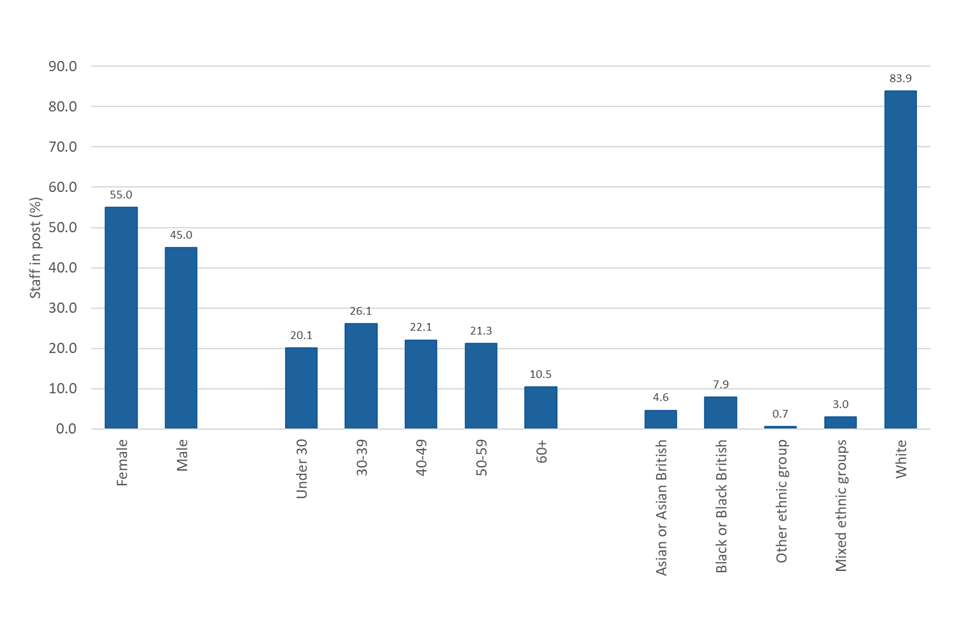
Age
As at 31 March 2025, the largest age group among HMPPS was 30-39, comprising 26.1% (17,981) of the workforce. This is largely driven by frontline roles in prisons and probation. Staff aged 40 or over accounted for 53.8% (37,065), an increase of 0.2 percentage points from the previous year, while those under 30 represented 20.1% (13,865), a decrease of 1.1 percentage points since last year. Overall, the age distribution of HMPPS staff has remained relatively stable since March 2021.
Frontline roles were predominantly filled by staff under 40. Among band 3-5 prison officers, 32.6% were aged 30-39 and 23.6% were under 30. For probation service grades below management, 24.6% were aged 30-39 and 24.9% were under 30. In all other grades groups, the largest proportions were in the 40-49 or 50-59 age bands.
Ethnicity
As at 31 March 2025, 86.9% of staff had self-reported their ethnicity. Of these, 16.1% (9,659) were from an ethnic minority background, an increase of 2.0 percentage points compared to 2023/24. Within ethnic minority groups, 7.9% of staff identified as Black or Black British (an increase of 1.7 percentage points since 31 March 2024) and 4.6% as Asian or Asian British (up 0.3 percentage points).
By grade, the lowest ethnic minority representation was among operational managers (bands 7-9) at 6.1%, no change from the previous year. The highest representation was among Probation Service below management level at 19.6%, an increase of 1.0 percentage points from 18.6% in 2023/24.
Figure 3: HMPPS staff by disability status, religion, and sexual orientation, as at 31 March 2025
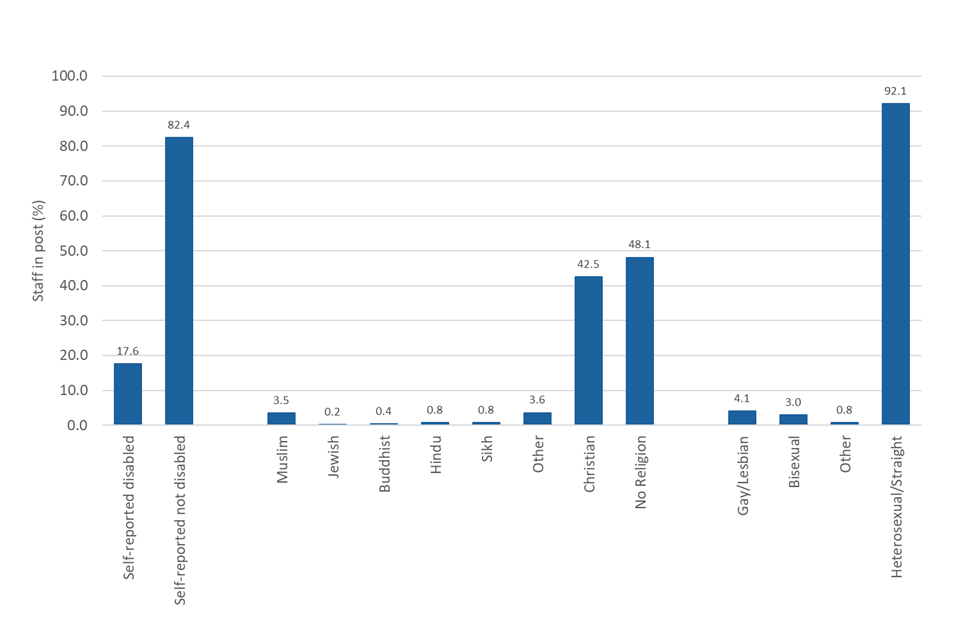
Disability
As at 31 March 2025, 81.9% of staff had self-reported their disability status. Of those, 17.6% identified themselves as disabled and 82.4% as non-disabled. Disability representation was lowest among band 3-5 officers (10.4%, 1,996 staff), and highest among Probation Service below management level (24.9%, 4,169 staff).
Religion
As at 31 March 2025, 80.2% of staff had self-reported their religious belief. Of those, 42.5% identified as Christian, 48.1% self-reported having no religion and 9.4% identified with a non-Christian religion. Within the non-Christian group, the largest proportions were ‘Other’ (3.6%) and Muslim (3.5%), while Jewish representation was 0.2%. These proportions were consistent with last year.
Sexual Orientation
As at 31 March 2025, 81.2% of staff had self-reported their sexual orientation. Of those, 92.1% identified as Heterosexual/Straight, while 7.9% identified as LGBO (Lesbian, Gay, Bisexual and Other), an increase of 0.2 percentage points from the previous year. The highest LGBO representation was among OSGs and Probation Service below management grades, at 9.1%, and 8.5% respectively. These were an increase of 0.2 and 0.5 percentage points compared to the previous year.
2. Joiners
There were 7,188 (headcount) new recruits to HMPPS in 2024/25; 4,037 fewer than in 2023/24 and a 36.0% decrease.
Females accounted for 52.9% of joiners and just under half of joiners (43.7%) were aged under 30 years old.
The number of staff appointed to HMPPS decreased from 11,225 in 2023/24 to 7,188 in 2024/25, a 36.0% decrease. The largest group of recruits were Probation Service below management grades, which includes probation service officers, with 2,780 appointed, followed by band 3-5 officers with 2,416 appointed. Figure 4 shows a breakdown of joiners across the available protected characteristics; additional details can also be found in the tables 2a and 2b.
Figure 4: HMPPS new joiners by protected characteristic, 1 April 2024 to 31 March 2025
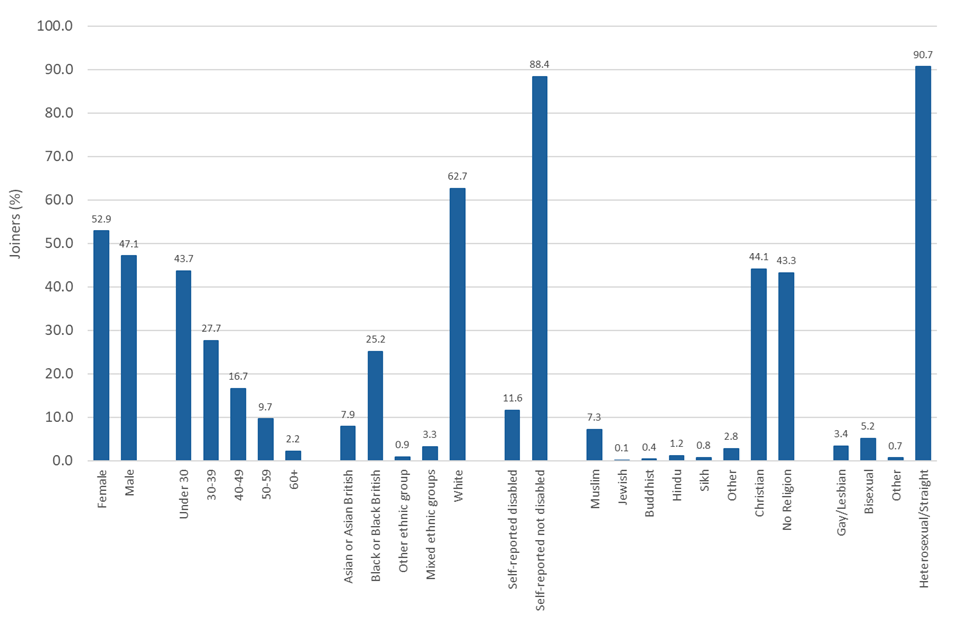
In 2024/25, 47.1% of new joiners to HMPPS were male and 52.9% were female, representing a 0.8 percentage point increase in the proportion of female recruits compared to the previous year. Gender distribution varied by grade where there were higher proportions of female recruits across most grade groups, such as operational manager (83.3%) and non-operational manager (70.3%) grades. However, band 3-5 officer recruits and OSG recruits had a higher proportion of males (70.4% and 56.1%, respectively).
Age profiles of new joiners showed that 43.7% (3,143 individuals) were under 30, while 28.6% (2,053) were aged 40 or older. Most grades had a higher proportion of recruits aged under 30, including 41.7% of operational managers, 36.0% of OSGs, 32.7% of non-operational managers, 40.7% of non-operational below managers, and 53.5% of Probation Service below management joiners. For band 3-5 officers, 37.7% of recruits were aged between 30-39 years old and for probation service managers, a higher proportion of recruits were aged between 50-59 years old (28.6%).
In 2024/25, 81.4% of new joiners had self-reported their disability status, with 11.6% identifying as disabled and 88.4% as non-disabled. The disability self-reporting rate has increased by 2.6 percentage points since 2023/24. Among grades where disclosure was possible, the lowest disability representation was among band 3-5 prison officers at 5.5%.
Religious affiliation among new joiners showed that 43.3% self-reported having no religion, while 56.7% self-reported belonging to a religious group (44.1% Christian and 12.6% non-Christian). Compared to 2023/24, the representation rate increased by 0.8 percentage points for non-Christian religions and by 9.2 percentage points for Christian religions. The overall self-reporting rate for religion rose by 2.7 percentage points since 2023/24.
In 2024/25, 82.2% of joiners self-reported their sexual orientation, an increase of 2.7 percentage points since 2023/24. Of those, 90.7% identified as Heterosexual/Straight, while 9.3% identified as Lesbian, Gay, Bisexual and Other (LGBO). Within the LGBO group, Bisexual staff represented the largest proportions of joiners (5.2%), followed by Gay/Lesbian (3.4%) and ‘other’ (0.7%).
For ethnicity, 70.2% of joiners self-reported their ethnic background, unchanged from 2023/24. Of these, 62.7% were from white backgrounds and 37.3% were from ethnic minority backgrounds. Within the ethnic minority groups, 25.2% of joiners identified as Black and 7.9% as Asian. Across grades where disclosure is possible, band 3-5 prison officers had the highest proportion of ethnic minority recruits (53.4%), while non-operational below management grades had much lower proportions (19.1%).
3. Temporary Cover
As at 31 March 2025, 3,496 staff (5.6%) were receiving temporary cover allowances (TCA).
TCA rates were higher for females, those aged 30-39 years old, white staff, non-disabled staff, and non-religious staff.
Temporary cover payments are a system that enables staff to work temporarily in a more senior role and receive an additional payment while this work is undertaken. Although temporary cover payments tend to be received for a considerable duration while an individual covers a role at a higher grade on a temporary basis, these figures are based on snapshots at a moment of time at the end of a financial year. As such, they may not accurately represent the rates of those receiving cover payments during the financial year.
As at 31 March 2025, 3,496 staff were receiving temporary cover allowances (TCA) for filling posts of a higher grade on a temporary basis, representing 5.6% of staff. This marks a decrease from 6.2% of staff as at 31 March 2024. Among grades, operational managers had the highest TCA rates at 9.8%, while Probation Service managers had the lowest rate at 3.0%. Figure 5 illustrates the TCA rates, with further details provided in tables 3a and 3b.
Figure 5: Temporary cover allowances (TCA) per 100 staff, as at 31 March 2025

As at 31 March 2025, 5.7% of females were on temporary cover compared with 5.4% of male staff. Among non-operational managers, TCA rates were lower for females (5.9%) than males (7.3%), while among operational managers, females had higher rates (10.3% compared to 9.4% for males). Female staff also had higher TCA rates in junior roles, including band 3-5 prison officers (7.8% compared to 6.1% for males) and non-operational below management grades (4.5% compared to 3.7% for males). In Probation Service grades, the pattern was mixed, where females had higher rates at the below management level (5.5% compared to 3.6% for males) but there was no gender difference at management level (both 3.0%).
Temporary cover payments were most common among those aged 30 to 39 (7.6%), followed by staff under 30 (6.4%), those aged 40 to 49 (6.0%), 50 to 59 (3.6%), and 60 or over (1.4%). For Probation Service below management grade, the highest rates were among those under 30 (8.5%) compared to 7.0% for those aged 30-39.
As at 31 March 2025, 4.0% of ethnic minority staff were receiving temporary cover payments compared to 6.0% of white staff, down from 4.9% and 6.5% respectively in the previous year. Within ethnic minority groups, staff who self-reported as being from Mixed ethnic groups had the highest rate of receiving TCAs at 5.8%, while Black staff had the lowest (3.3%). Caution is advised when interpreting these figures due to small subgroup sizes.
Disabled staff were less likely to receive temporary cover allowances than non-disabled staff (5.0% and 5.9%, respectively), a trend consistent with the previous year. This pattern held across all grades except band 3-5 prison officers, where 7.7% of disabled staff received temporary cover payments compared to 6.7% of non-disabled officers.
By religion, 5.1% of staff with non-Christian affiliations received temporary cover payments, compared to 4.9% of Christian staff and 6.5% of staff reporting no religion. Within the non-Christian groups, staff who self-reported as ‘other’ had the highest rate of receiving TCAs at 6.6%.
Staff identifying themselves as LGBO (Lesbian, Gay, Bisexual, or Other) were more likely to receive temporary cover allowances than Heterosexual/Straight staff (7.8% compared to 5.5%, respectively). This pattern is consistent across the time series shown in the tables.
4. Promotions
In 2024/25, 4.0% of permanent staff were promoted, an equivalent of 2,724 promotions.
The rate of promotions was higher among females, those aged under 30 years old, white staff, non-disabled staff, and staff who identified as LGBO (Lesbian, Gay, Bisexual and Other).
Promotions relate to staff moving to a more senior grade through an internal process. Operational Support Grade staff who convert to become prison officers are known as ‘conversions’ and not defined as promotions and so this specific grade change does not appear in this report. Promotions are reported in terms of the grade of the staff prior to promotion rather than the grade they were promoted into. Similarly, rates are calculated in relation to the number of staff in the lower grade.
In 2024/25, 4.0% of staff were promoted (the equivalent of 2,724 promotions within the year), a decrease from the rate of 4.4% (2,926 promotions) in 2023/24.
The rate of promotions, which represents the number of individuals promoted per 100 staff, in 2024/25 across all protected characteristics is illustrated in figure 6. Additional details on promotions can also be found in tables 4a and 4b.
Figure 6: Promotions per 100 staff, 1 April 2024 to 31 March 2025

The promotion rate for female staff was higher in 2024/25 at 4.4% (1,664) than for males at 3.4% (1,060). Over the past 4 years, promotion rates have been consistently higher among female staff. This trend was evident across operational managers, band 3-5 prison officer, OSG, all non-operational grades, and Probation Service below management grades. The only exception was Probation Service Management Grade, where male staff had a higher promotion rate (1.1%) than females (0.6%).
The rate of promotions declines with age. In 2024/25, staff aged under 30 had the highest rate at 5.7% followed by those aged 30 to 39 at 5.3%. Promotion rates then fell to 4.0% for staff aged 40 to 49, 2.1% for those aged 50-59, and 0.9% for staff aged 60 and over.
Across operational grades in 2024/25, operational managers had the highest promotion rate at 6.3% compared to the more junior grades, where 4.1% of band 3-5 officers and 2.6% of OSGs were promoted. In contrast, within non-operational and Probation Service grades, staff below management level were more likely to be promoted than managers. Promotion rates were 5.2% of non-operational staff below management compared with 3.2% non-operational managers, and 4.0% of Probation Service below management staff compared to 0.7% of Probation Service management.
In the 12 months ending 31 March 2025, ethnic minority staff had a lower promotion rate at 3.1% than white staff at 4.1%. Within the ethnic minority groups, those with a Mixed ethnic background had the highest rate at 5.0%. Where numbers are high enough to disclose, white staff had a higher promotion rate compared to ethnic minority staff across all grade groups, apart from Probation Service below management grades where the promotion rate was the same at 4.0%.
In 2024/25, staff who self-reported a disability had a lower overall promotion rate (3.3%) compared with non-disabled staff (4.2%). This pattern was consistent across non-operational and probation service grades. However, among operational grades, disabled staff were promoted at higher rates. Specifically, operational managers had rates of 6.7% for disabled staff compared to 5.9% for non-disabled staff; band 3-5 prison officers had rates of 4.4% for disabled staff compared to 4.2% for non-disabled staff; and OSG staff had rates of 3.2% for disabled staff compared to 2.7% for non-disabled staff.
In 2024/25, promotion rates were slightly higher among staff identifying as Christian (3.3%) compared with those affiliated with non-Christian religions (3.1%). Both groups had lower rates than staff reporting no religion, who had a promotion rate of 4.9%. Within the non-Christian group, staff identifying as Jewish had the highest rate of promotion at 4.4%.
Staff who identified themselves as LGBO (Lesbian, Gay, Bisexual, or Other) had a higher promotion rate (5.2%) compared to Heterosexual/Straight staff (4.0%). This difference was evident across all grades, with LGBO staff achieving higher promotion rates than their heterosexual counterparts within the same grade.
5. Recognition and reward bonuses
In 2024/25, 40.0% of staff employed in the year were awarded a recognition and reward bonus.
The rate of bonuses awarded was higher for; females (46.0%) compared to their male counterparts (32.8%), white staff (42.1%) compared to ethnic minority staff (35.5%), and disabled staff (44.7%) compared to non-disabled staff (40.7%).
Recognition and reward (R&R) bonuses allow local management the opportunity to recognise and reward any member of staff for exceptional performance in a particularly demanding task or situation through a one-off non-consolidated lump sum payment of up to £2,000 (or up to £20,000 with CEO approval). R&R bonuses can be rewarded in either cash or voucher form. The figures here represent staff receiving an award of either kind.
In 2024/25, there was a total of 76,990 staff employed at any time during the year (including those joining or leaving during it), of whom 30,819 staff (40.0%) were awarded a recognition and reward bonus in the year. The average value of R&R bonuses was £188 per staff member.
Bonus rates and the average value per person were higher for managerial positions than for junior positions. Among operational grades, 51.0% of operational managers received bonuses averaging £673 per person, compared with 26.9% of band 3-5 officers (an average of £128 per person) and 16.4% of OSGs (an average of £70 per person). A similar pattern was seen for non-operational and Probation Service grades too: 59.8% of non-operational managers were awarded bonuses averaging £460 per person, compared with below management non-operational staff at 41.4% with an average of £231 per person. For Probation Service grades, 80.4% of management grades were awarded bonuses (an average of £298 per person), compared to 52.5% of staff below management grades (an average of £112 per person).
The rate of recognition and reward bonuses and the average value per award across protected characteristics are illustrated in figures 7 and 8 below. Recognition and reward bonus statistics can be viewed in tables 5a & 5b.
Figure 7: Percentage of staff who received a recognition and reward bonus, 1 April 2024 to 31 March 2025
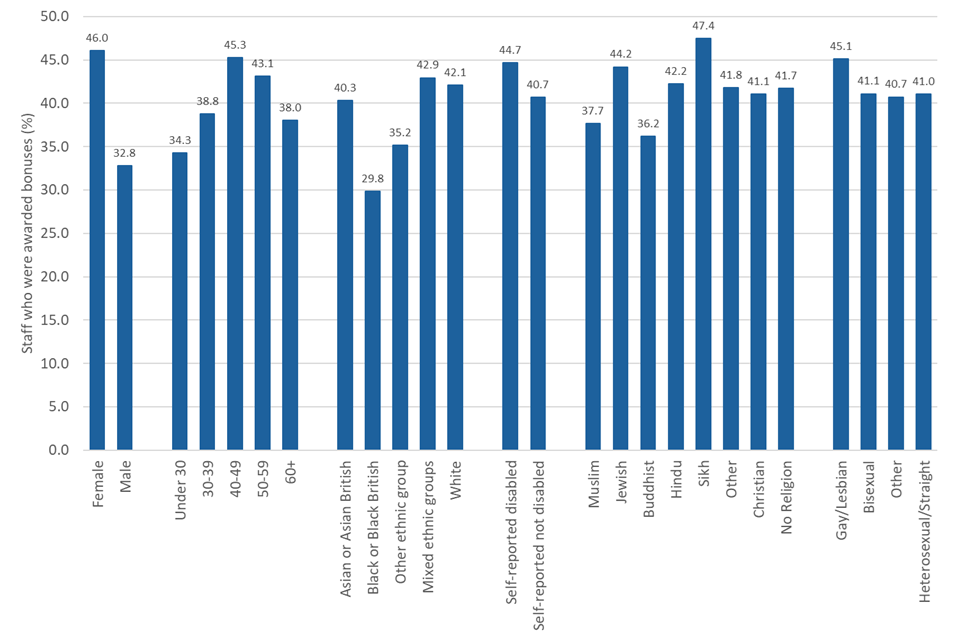
Figure 8: Average value of recognition and reward bonuses per employee, 1 April 2024 to 31 March 2025

In 2024/25, female staff were awarded recognition and reward bonuses at a higher rate than male staff at 46.0% compared to 32.8%, respectively. The average bonus value was also higher for females (£193) than for males (£179). This pattern of higher award rate for female staff was consistent across all grades.
In 2024/25, staff aged 40-49 had the highest rate of bonuses awarded at 45.3%, with the highest average bonus value of £232. In contrast, staff aged under 30 had the lowest rate of bonuses awarded at 34.3% and the lowest average value of £121.
In 2024/25, ethnic minority staff were awarded bonuses at a lower rate than white staff (35.5% compared to 42.1% respectively). The average value of bonuses awarded to ethnic minority staff was also lower (£176) compared with white staff (£194). There were differences between the rates and average value of bonuses awarded to the different groups of ethnic minority staff. Staff who self-reported themselves as from a Mixed ethnic background had the highest bonus award rate (42.9%) but lower average value (£174 per person). In contrast, staff who self-reported themselves as Black or Black British had the lowest award rate (29.8%) but a slightly higher average value (£176). The highest average bonus value among ethnic minority groups was staff identifying as being from Other ethnic groups (£185).
In 2024/25, staff who self-reported a disability were awarded recognition and reward bonuses at a higher rate (44.7%) than non-disabled staff (40.7%). However, the average value of these bonuses was lower for disabled staff at (£178) compared to non-disabled staff (£194).
By religion, staff identifying as non-Christian had a slightly lower bonus award rate (40.5%) than Christian staff (41.1%) and those reporting no religion (41.7%). Staff who self-reported themselves as LGBO (Lesbian, Gay, Bisexual and Other) were awarded bonuses at a higher rate than Heterosexual/Straight staff (43.2% compared to 41.0%), although their average bonus value was slightly lower (£180 and £192, respectively).
6. Grievances
In 2024/25, 1,081 staff raised grievances resulting in 1,278 cases. Of these cases, 40.4% were upheld/partially upheld.
This is an increase from 2023/24 where 1,022 staff raised grievances resulting in 1,198 cases. In 2024/25, the overall rate of staff raising grievances was 1.6 per 100 staff, a slight increase from 1.5 per 100 staff in 2023/24. The raising of grievances in 2024/25 was higher for: ethnic minority staff (at 1.9 per 100 staff) compared to white staff (at 1.4 per 100 staff), disabled staff (at 3.0 per 100 staff) compared to non-disabled staff (at 1.2 per 100 staff), non-Christian staff (at 2.2 per 100 staff) compared to Christian staff (at 1.6 per 100 staff) and staff with no religion (at 1.3 per 100 staff), and LGBO staff (at 2.2 per 100 staff) compared to Heterosexual/Straight staff (at 1.4 per 100 staff).
A grievance is defined as any concern, problem or complaint raised by an individual member of staff relating to his or her employment. Only grievances that have gone through the formal procedures are analysed here. Grievances resolved locally or through mediation are not recorded centrally. Further details on grievances can be found in tables 6a, 6b(i), 6b(ii).
In 2024/25, 1,081 staff raised grievances, resulting in 1,278 cases. Of these, 40.4% (516 cases) were upheld or partially upheld, a decrease of 8.0 percentage points compared to the previous year. Overall, grievances were raised at a rate of 1.6 per 100 staff, a slight increase of 0.1 percentage points since 2023/24. By grade, band 3-5 officers and Probation Service below management grades had the highest grievance rates, at 1.7 per 100 staff.
Figures 9 and 10 show the rate per 100 staff raising grievances and the percent of cases upheld or partially upheld, split by protected characteristic.
Figure 9: Number of staff per 100 staff raising grievances, 1 April 2024 to 31 March 2025
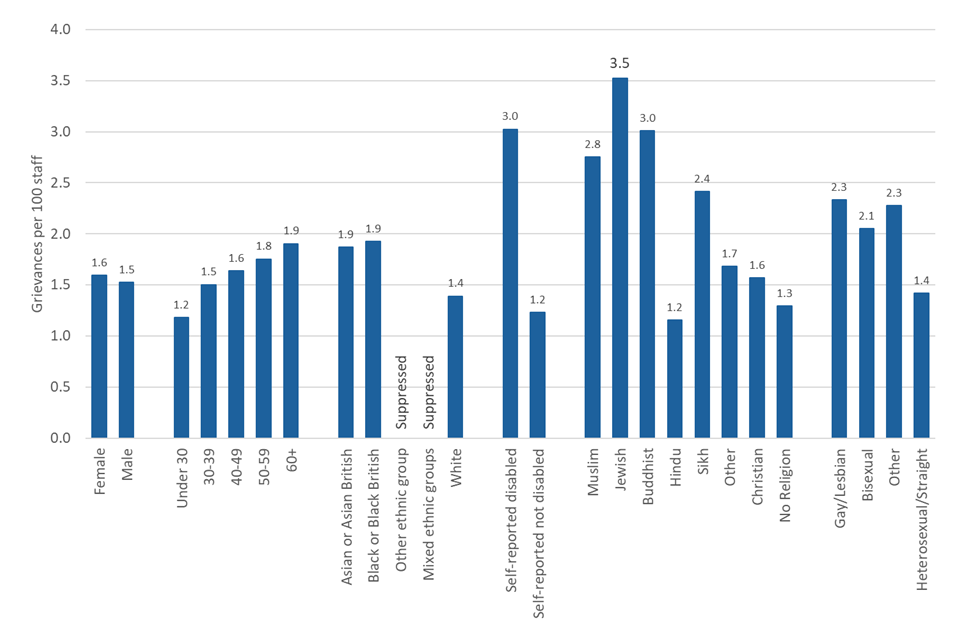
Figure 10: Percent of cases upheld or partially upheld, 1 April 2024 to 31 March 2025

Female staff raised grievances at a slightly higher rate than male staff (1.6 and 1.5 per 100 staff). The percentage of cases upheld or partially upheld was also higher for females (40.9%) than males (39.7%). Among non-operational and Probation Service grades, females raised fewer grievances compared to males at below management grades but more at senior grades. In operational grades, females in band 3-5 officer and OSG roles had higher grievance rates than male counterparts. Where numbers are high enough to disclose, the largest difference between rates of female and male staff was in the OSG grade group (at 1.6 and 0.6 per 100 staff respectively).
Grievance rates tended to increase with age. Staff under 30 had the lowest rate (1.2 per 100 staff), compared to 1.8 per 100 staff for ages 50-59 and 1.9 per 100 staff for staff aged 60 and over. This pattern was broadly consistent across the time series.
Ethnic minority staff raised grievances at a higher rate than white staff (1.9 and 1.4 per 100 staff, respectively). However, the percentage of cases upheld or partially upheld was higher for white staff (41.2%) compared to ethnic minority staff (37.9%).
Self-reported disabled staff raised grievances at more than twice the rate of non-disabled staff (3.0 and 1.2 per 100 staff, respectively), a pattern consistent across all grades.
Non-Christian staff raised more grievances (2.2 per 100 staff) than both Christian staff (1.6) and those with no religion (1.3). Among non-Christian groups, Jewish staff had the highest rate at 3.5 per 100 staff. Considering grades where numbers are large enough to disclose, this pattern of non-Christian grievance rates being higher than Christian rate was seen across all grades, apart for OSGs. Christian staff had the lowest proportion of upheld or partially upheld cases (37.2%) compared to non-Christian staff (39.2%) and staff with no religion (42.7%).
Staff who identified themselves as LGBO raised grievances at a higher rate (2.2 per 100 staff) than Heterosexual staff (1.4 per 100 staff). LGBO staff also had a higher proportion of upheld/partially upheld cases (45.8%) than for Heterosexual staff (39.0%).
7. Investigations and Conduct & Discipline cases
In 2024/25, the overall rate of staff who were investigated was 3.7 per 100 staff, no change since 2023/24
The rate was higher among male staff (5.6 per 100) compared to female staff (2.2 per 100), ethnic minority staff (5.3 per 100) compared to white staff (3.2 per 100), and those aged 30-39 (4.6 per 100) compared to staff in other age groups.
In 2024/25, the overall rate of conduct and discipline cases was 1.9 per 100 staff, an increase from 1.6 per 100 staff in 2023/24
The rate of conduct and discipline cases was substantially higher among male staff (2.8 per 100) compared to female staff (1.1 per 100). Similarly, staff from ethnic minority backgrounds experienced a higher rate (2.6 per 100) than white staff (1.6 per 100).
Over the last few years, HMPPS has been working on improving professional standards with the aim of improving confidence in speaking out. Case numbers may therefore have increased due to individuals having greater confidence in speaking out about issues and due to clearer expectations in how managers should handle disclosures.
Investigations into staff conduct are designed to establish the truth of the case and to determine whether conduct and discipline action is recommended. A conduct and discipline case imposes a penalty on a member of staff for wrongdoing. In cases of summary dismissal, it is not always possible to have had a full internal investigation.
Both investigations and conduct and discipline cases may involve multiple charges and may have multiple outcomes for the different parts of the case. More than one member of staff can also be charged and penalised in a single case. For this report, a case is defined as a charge or set of charges being brought against an individual. Where more than one individual is charged together, they are counted as multiple cases in this report. Allegations which meet a criminal threshold will be referred to the Police for investigation. If a criminal justice outcome is secured, this will result in a summary dismissal as per PSI 10/2016 Conduct and Discipline and will not be recorded against a specific ‘type’ of misconduct in the Conduct and Discipline data.
Further details on investigations and conduct and discipline cases can be found in tables 7a, 7b(i) and 7b(ii), and 8a, 8b(i) and 8b(ii).
In 2024/25, 2,576 staff faced at least one investigation, representing a rate of 3.7 per 100 staff, no change compared to 2023/24. Of the 2,771 cases, 1,856 (67.0%) resulted in a recommendation for further action. Band 3-5 officers had a higher investigation rate at 6.9 per 100 staff compared to all other grades with a rate of 3.9 or lower.
Male staff were investigated at more than twice the rate of female staff (5.6 per 100 males compared to 2.2 per 100 females), a trend consistent across all grades. Additionally, cases involving male staff were more likely to lead to further action (68.2%) than those involving female staff (64.3%).
Figures 11 and 12 show the rates per 100 staff who were investigated in 2024/25 and the proportion of cases where further action was recommended, split by protected characteristic.
Figure 11: Staff subject to at least one investigation per 100 staff in post, 1 April 2024 to 31 March 2025
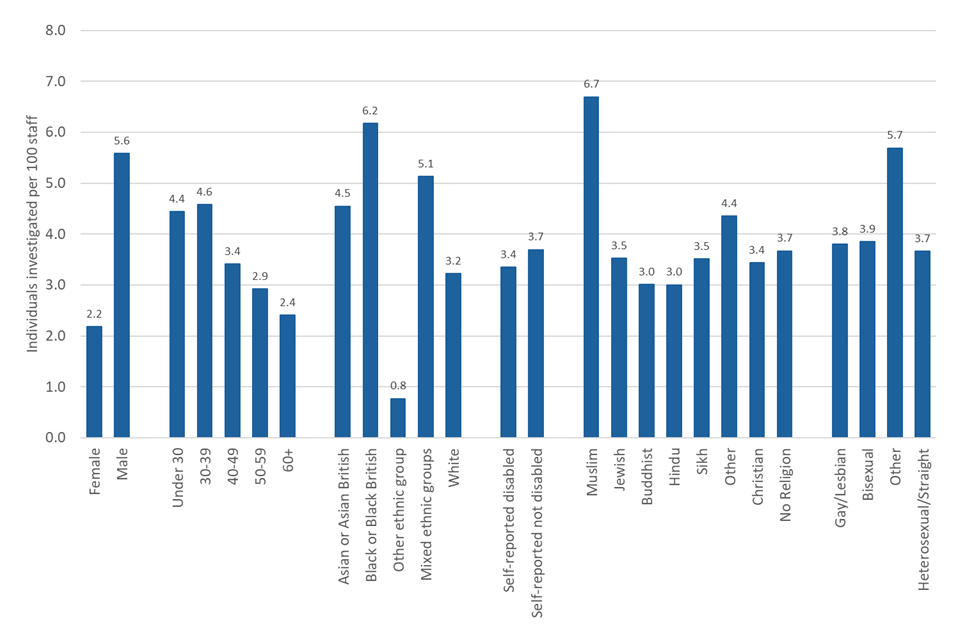
Figure 12: Proportion of Investigations where further action was recommended, 1 April 2024 to 31 March 2025
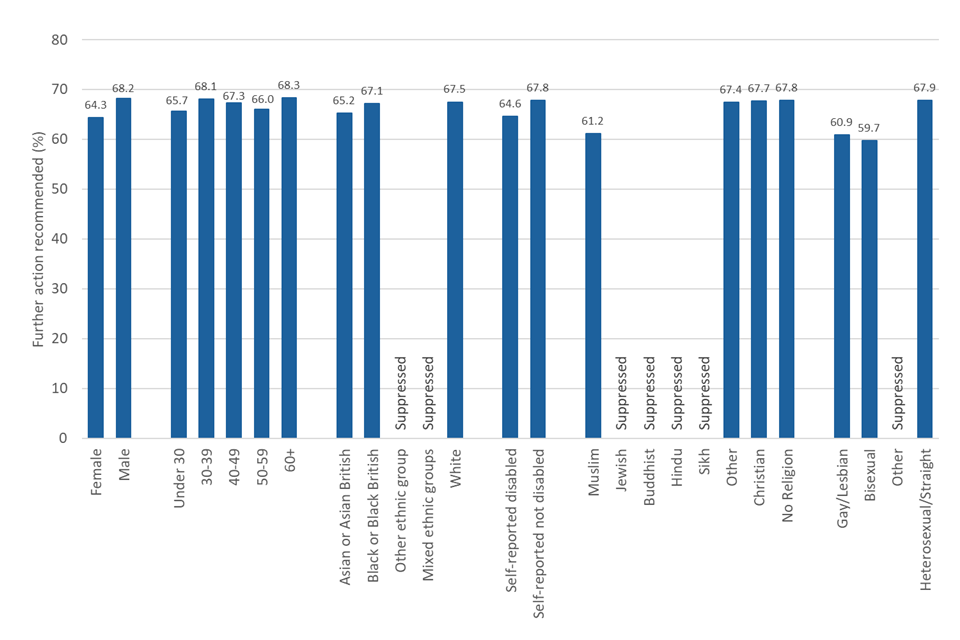
In 2024/25, investigation rates tended to decline with age, from 4.4 and 4.6 per 100 staff for those aged under 30 and 30 to 39, respectively, to 2.4 per 100 staff aged 60 and over.
Staff from ethnic minority backgrounds were investigated at a higher rate than white staff (5.3 per 100 staff compared to 3.2 per 100). The percentage of cases with further action recommended was similar for both groups, at 66.9% for ethnic minority staff and 67.5% for white staff.
Investigation rates also varied by religion. Staff with non-Christian religious beliefs were investigated at 4.9 per 100, compared to 3.4 per 100 for Christian staff. Staff who self-reported no religion had a rate of 3.7 per 100 staff and had the highest proportion of cases resulting in further action being recommended (67.8%). Christian staff had 67.7% and non-Christian staff had 61.2% of cases resulting in further action being recommended.
Staff who identified as LGBO were investigated at a slightly higher rate than Heterosexual/Straight staff (4.0 and 3.7 per 100, respectively), a pattern consistent across the time series.
Overall, 1,286 staff were subject to conduct and discipline action in 2024/25, a rate of 1.9 per 100 staff. There were 1,344 conduct cases, of which 30.1% resulted in the penalty of dismissal [footnote 4]. The highest rate of conduct cases was among band 3-5 prison officers, at 3.2 per 100 staff.
Figures 13 and 14 show the rates per 100 staff who were subject to conduct and discipline action and the proportions of conduct cases leading to dismissal in 2024/25, split by protected characteristics.
Figure 13: Staff per 100 staff subject to conduct and discipline action, 1 April 2024 to 31 March 2025
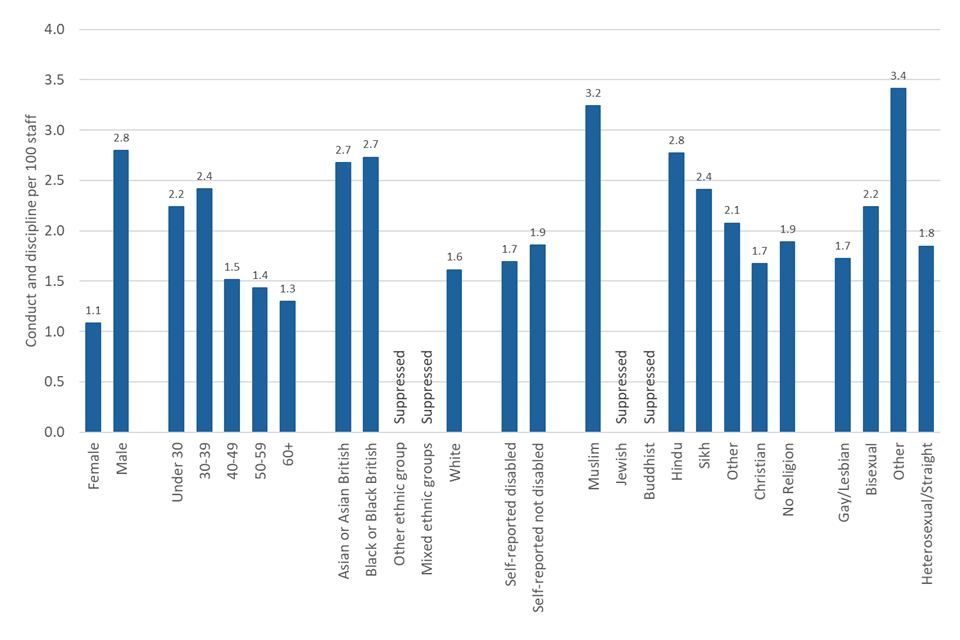
Figure 14: Percentage of conduct cases leading to dismissal, 1 April 2024 to 31 March 2025
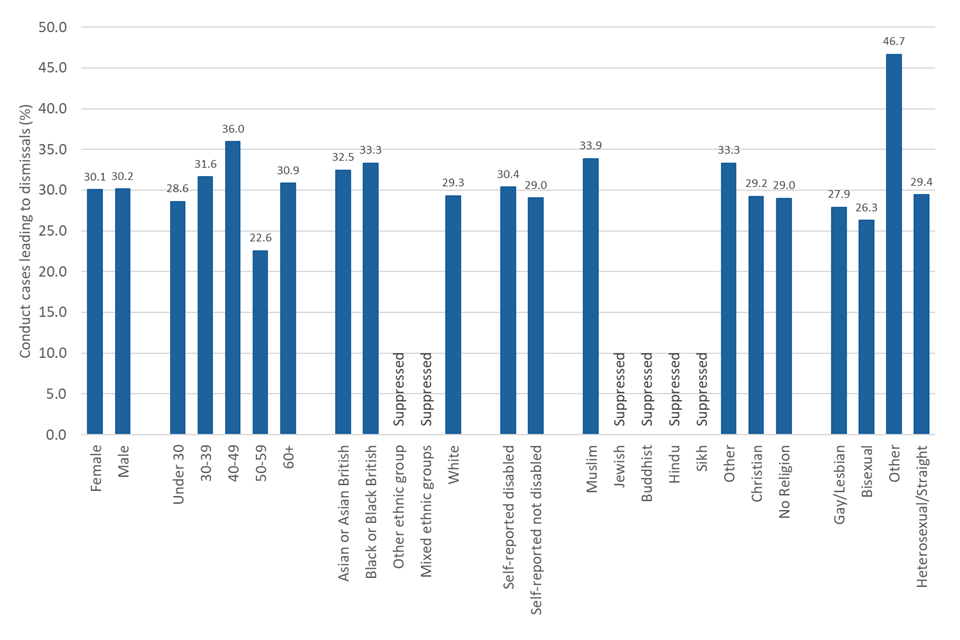
The rate of conduct cases involving male staff was more than twice that of female staff (2.8 per 100 males compared with 1.1 per 100 females), a pattern consistent across most grades. The proportions of cases resulting in dismissal was similar for both groups (30.2% for males and 30.1% for females).
In 2024/25, staff aged 30-39 had the highest rate of conduct and discipline cases at 2.4 per 100 staff, with rates declining with age to 1.3 per 100 among those aged 60 and over.
Ethnic minority staff were subject to conduct and discipline action at a higher rate than white staff (2.6 and 1.6 per 100 staff). The proportion of dismissals resulting from conduct cases was also higher for ethnic minority staff (31.2%) compared with white staff (29.3%). Staff who self-reported a disability had a slightly lower rate of conduct and discipline cases (1.7 per 100) than non-disabled (1.9 per 100), though the proportion of cases resulting in dismissals was higher for disabled staff compared to non-disabled staff (30.4% and 29.0% respectively).
In 2024/25, staff with non-Christian religious beliefs were subject to conduct and discipline action at a rate of 2.5 per 100 staff, compared to 1.7 per 100 for Christian staff and 1.9 per 100 for those with no religion. Non-Christian staff also had the highest proportion of cases which resulted in dismissals (30.3%) compared with Christian staff (29.2%) and those with no religion (29.0%). Staff identifying as LGBO were subject to conduct and discipline action at a slightly higher rate than Heterosexual staff (2.1 per 100 versus 1.8 per 100).
8. Sickness Absence
In 2024/25, HMPPS staff lost an average of 11.9 working days due to sickness, an increase of 0.7 average working days lost compared to 2023/24.
The average working days lost due to sickness increased with age and was higher for females, and those that self-reported themselves as ethnic minority, disabled, non-Christian, or LGBO.
Sickness absence is represented in this section by the average working days lost (AWDL) due to sickness per employee per year. In 2024/25, the AWDL due to sickness absence was 11.9, an increase of 0.7 days from 11.1 in 2023/24. Across operational, non-operational and Probation Service roles, AWDL was lower for senior staff compared with grades below management level. The highest AWDL was recorded among grades below management level: 13.1 days for band 3-5 prison officers, 11.4 days for OSGs, 9.3 days for non-operational below managers and 14.0 days for Probation Service staff below management.
Female staff had a higher AWDL than male staff at 12.1 days compared to 11.6 days, respectively. Across the grades, AWDL was higher for males in operational managers, non-operational below management, and Probation Service below management groups. For all other grade groups, the AWDL was higher for females than males.
Figure 15 illustrates the AWDL in 2024/25 across all protected characteristics. Further details on sickness absence can be found in tables 9a and 9b.
Figure 15: Average working days lost due to sickness absence, 1 April 2024 to 31 March 2025
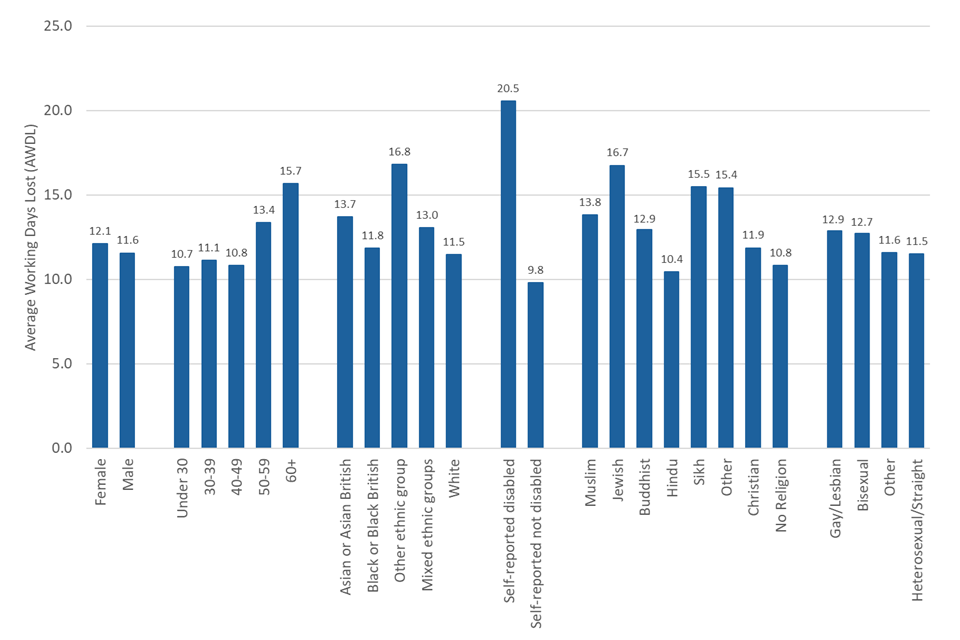
In 2024/25, the average working days lost to sickness absence increased with age, from 10.7 days for staff under 30 to 15.7 days for those aged 60 or over. This pattern was evident across many grades.
AWDL also varied by ethnicity. Ethnic minority staff had an average of 12.8 days lost compared with 11.5 days for white staff. Within the ethnic minority groups, ‘Other’ ethnic backgrounds had the highest AWDL (16.8 days), followed by Asian or Asian British (13.7), Mixed ethnic groups (13.0) and Black or Black British (11.8). Compared with 2023/24, AWDL among white staff increased by 0.8 days, while rates for ethnic minority groups remained broadly unchanged. By grade, AWDL was generally higher for ethnic minority staff, except for band 3-5 officers (13.2 days for white staff compared to 12.0 for ethnic minority staff) and OSGs (11.8 compared to 9.8).
Disabled staff had considerably higher AWDL than non-disabled staff (20.5 days compared to 9.8 days, respectively), a trend consistent across all grade groups.
Religious affiliation also showed differences whereby staff who self-reported themselves as a non-Christian had a an AWDL of 14.3 days, compared with 11.9 days for Christian staff and 10.8 days for those with no religion. Among the non-Christian groups, Jewish staff had the highest AWDL of 16.7 days.
By sexual orientation, staff identifying as LGBO had a higher AWDL (12.7 days) than Heterosexual/Straight staff (11.5 days).
9. Leavers
In 2024/25, the leaving rate of HMPPS staff was 10.7%, a decrease of 0.9 percentage points since 2023/24.
Leaving rates were higher amongst male staff (11.9%) compared female staff (9.7%). By age, the highest leaving rate was for those aged 60 and over (18.9%), followed by those aged under 30 (14.3%).
In the 12 months ending 31 March 2025, 7,375 permanent staff (headcount) left HMPPS. The leaving rate stood at 10.7%, representing a decrease of 0.9 percentage points from the previous year’s rate of 11.6%. For the 12 months to 31 March 2021, increased uncertainty in the employment market following the COVID-19 pandemic may have contributed to the drop in the number of resignations during most of the year, therefore impacting on the overall reduced leaving rates. After this decline, leaving rates peaked at 12.6% in 2021/22 before gradually decreasing year-on-year. Although the latest leaving rates for most grades are still higher than pre-pandemic levels, most have decreased over the past year. The rates presented include retirement but exclude voluntary exits under the Voluntary Early Departure Scheme and redundancies (VEDSR).
Leaving rates for each protected characteristic are shown in figure 16. Further details on leavers can be found in tables 10a to 10c.
Figure 16: Permanent staff leaving rates (excluding VEDSR), 1 April 2024 to 31 March 2025
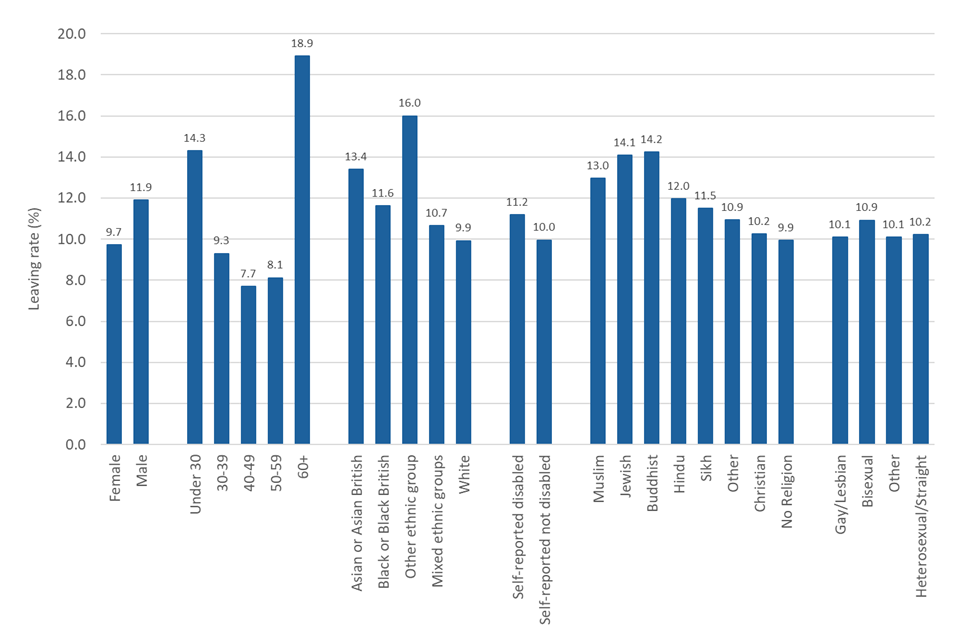
In the 12 months to 31 March 2025, the leaving rate for female staff was 9.7%, lower than the rate for male staff at 11.9%. This represents a decrease of 1.0 percentage points for female staff and 0.7 percentage points for males compared with the previous year.
Operational grades below management had the highest leaving rates. OSGs recorded a rate of 14.4%, a decrease from 15.9% in 2023/24, while band 3-5 officers had a rate of 12.5%, a decrease from 13.2% in 2023/24. Considering gender splits of leaving rates by grade group, all grades had a higher leaving rate for males than females, with the largest difference among operational managers (5.8% for female staff compared to 8.6% for male staff).
As leaving rates include retirement, it would be expected that those aged 60 and over would have one of the highest leaving rates. Accordingly, the leaving rate for those aged 60 and over was the highest at 18.9%, an increase of 1.0 percentage points compared to the previous 12 months. Staff under 30 had the second highest rate at 14.3%, a decrease of 1.6 percentage points. This trend was consistent across the grade groups.
By ethnicity, ethnic minority staff had a higher leaving rate (12.1%) than white staff (9.9%). Within the ethnic minority groups, those who identified themselves as being from Other ethnic groups had the highest rate at 16.0%. Disabled staff also had a higher leaving rate (11.2%) compared with non-disabled staff 10.0%. This pattern was seen across all grades except for Probation Service management grades, where non-disabled staff had a higher rate (4.1% compared to 3.5%).
In 2024/25, staff identifying as non-Christian had a leaving rate of 12.0%, compared with 10.2% for Christian staff and 9.9% for those with no religion. Staff who self-reported themselves as LGBO had a slightly higher leaving rate (10.4%) than Heterosexual/Straight staff (10.2%).
Further Information
Accompanying files
As well as this report, the following products are published as part of this release:
-
A technical guide and glossary providing details of the data sources and quality. Information on the revisions policy and disclosure relevant to HMPPS staffing data as well as a definition of terms used is also included.
-
A set of tables for the year as well as over time.
Accredited Official Statistics
The statistics in this bulletin are classified as accredited official statistics. Accredited official statistics refer to official statistics that have been independently reviewed by The Office for Statistics Regulation (OSR) to ensure they comply with the standards trustworthiness, quality and value in the Code of Practice for Statistics. Accredited official statistics are referred to as ‘National Statistics’ in the Statistics and Registration Service Act 2007. The term ‘Accredited Official Statistics’ to describe national statistics was introduced by OSR in September 2023, following a review of the National Statistics designation.
The Statistics and Registration Service Act 2007 defines ‘official statistics’ as all those statistical outputs produced by the UK Statistics Authority’s executive office (the Office for National Statistics), by central Government departments and agencies, by the devolved administrations in Northern Ireland, Scotland, and Wales, and by other Crown bodies (over 200 bodies in total). The statistics in this bulletin comply with all aspects of the Code of Practice for Official Statistics. The Code encourages and supports producers of statistics to maintain their independence and to ensure adequate resourcing for statistical production. It helps producers and users of statistics by setting out the necessary principles and practices to produce statistics that are trustworthy, high quality and of public value.
Contact
Press enquiries should be directed to the Ministry of Justice press office:
Tel: 020 3334 3536
Email: newsdesk@justice.gov.uk
Other enquiries about these statistics should be directed to:
Rob Hartley
Workforce and Equalities Statistics Team
Analysis Directorate
Ministry of Justice
10 South Colonnade
London
E14 4PH
Email: robert.hartley@justice.gov.uk
Next update: 26 November 2026
URL: www.gov.uk/government/collections/national-offender-management-service-workforce-statistics
© Crown copyright
Produced by the Ministry of Justice
Alternative formats are available on request from statistics.enquiries@justice.gov.uk
-
Excluding white minorities. ↩
-
In this report, Probation Service staff are reported according to grade and therefore vary slightly from the total number of staff in the Probation Service. This is due to the small number of Probation Service staff in non-Probation Service grades. Likewise, a small number of staff in Probation Service grades work in other parts of HMPPS. ↩
-
In the HR system, there is a database field called Gender which can only be one of two options – male or female. It is filled in for all staff when new staff records are created using details to confirm identity (i.e. name, date of birth, address) from official documentation supplied by the successful job applicant. However, it is possible for this information to be updated in line with departmental policy. The Office of Statistics Regulation recognises that this is an evolving area both for society and statistics, so advice and guidance is likely to change over time. ↩
-
Details of appeals are not included in the analysis so several the penalties may have been overturned on appeal. ↩
